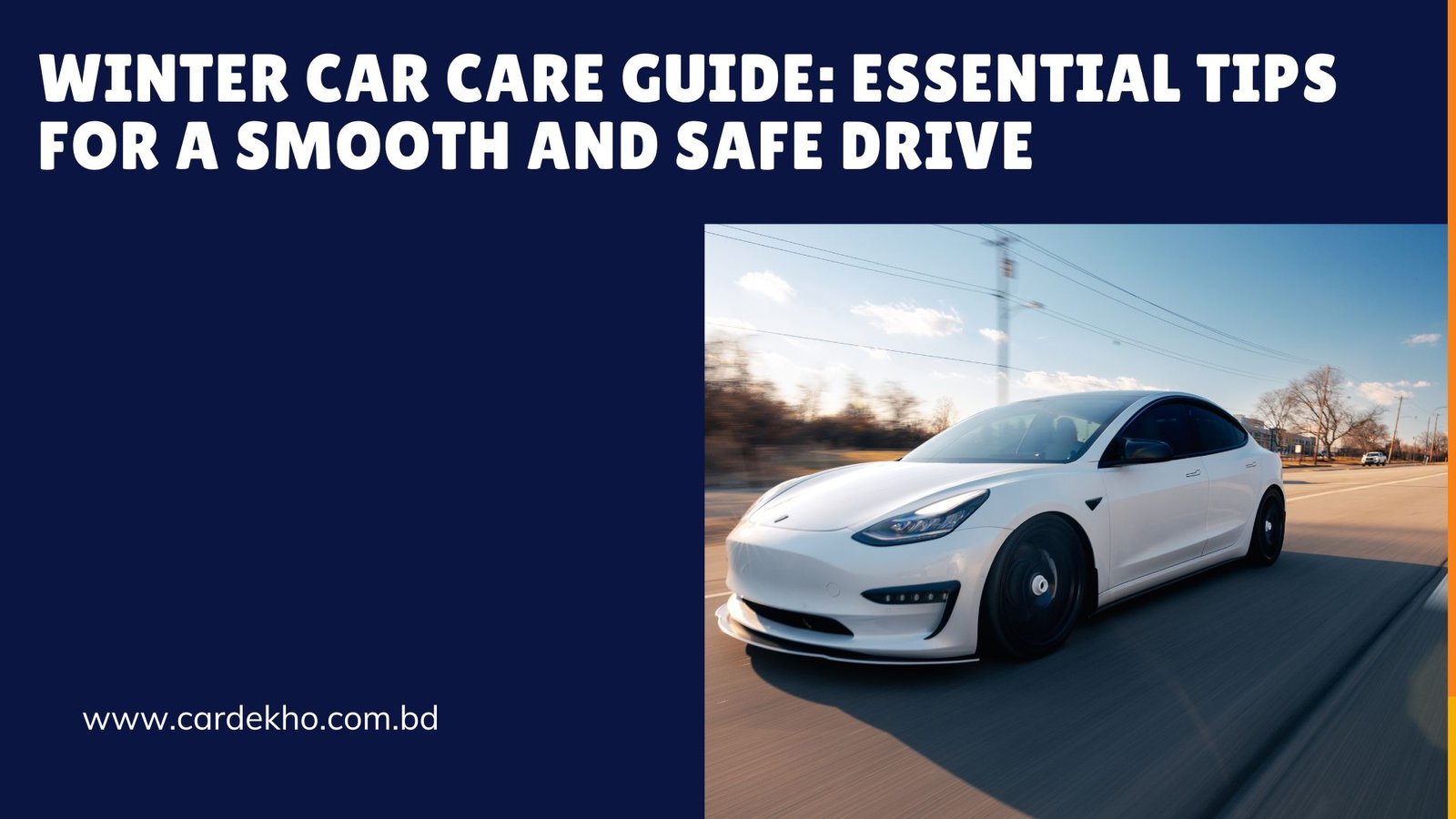Winter can be tough on vehicles, especially in regions where temperatures drop significantly. Even in Bangladesh, where winter is relatively mild, morning fog, cold starts, and moisture can affect your car’s performance.
Proper winter car care ensures safety, reliability, and efficiency. This guide will provide essential tips for protecting your car, preventing breakdowns, and ensuring a smooth driving experience in the cold months.
Why Winter Car Care is Important?
During winter, cold temperatures and moisture can cause engine trouble, battery failure, tire pressure loss, and visibility issues. Key challenges include:
✅ Difficult Engine Start – Cold temperatures thicken engine oil, making it harder for the engine to turn over.
✅ Reduced Battery Performance – Car batteries struggle in cold weather.
✅ Lower Tire Pressure – Cold air contracts, reducing tire inflation and grip.
✅ Poor Visibility – Foggy mornings in Bangladesh can affect driving safety.
✅ Increased Fuel Consumption – Engines take longer to warm up, leading to higher fuel usage.
To avoid these issues, follow this comprehensive winter car maintenance guide.
1. Check and Maintain the Battery
🚗 Why?
Cold weather reduces battery efficiency, making it harder for the engine to start.
🔧 Tips:
- Check the battery voltage (should be above 12.6V when fully charged).
- Ensure battery terminals are clean and tight to prevent power loss.
- If your battery is 3+ years old, consider replacing it before winter.
- Keep jumper cables in your car for emergencies.
💡 Pro Tip: If your car struggles to start in the morning, turn on the headlights for 30 seconds before starting the engine. This warms up the battery slightly.
2. Use the Right Engine Oil
🚗 Why?
Cold weather thickens engine oil, making it harder to circulate and lubricate the engine.
🔧 Tips:
- Switch to a low-viscosity oil (e.g., 5W-30 or 0W-20 instead of 10W-40).
- Use synthetic oil, as it performs better in cold conditions.
- Check the oil level regularly and top up if necessary.
3. Check the Coolant and Antifreeze Levels
🚗 Why?
Coolant (antifreeze) prevents the engine from freezing and overheating.
🔧 Tips:
- Ensure your coolant mixture is 50% water and 50% antifreeze for maximum protection.
- Look for leaks in the radiator, hoses, and coolant reservoir.
- Replace old coolant if it looks dirty or rusty.
💡 Pro Tip: Never mix different types of coolant, as this can cause engine damage.
4. Inspect and Maintain Tires
🚗 Why?
Cold weather reduces tire pressure, affecting grip and safety.
🔧 Tips:
- Check tire pressure weekly (ideal range: 30-35 PSI).
- Ensure tread depth is at least 2mm for better traction.
- Rotate tires every 5,000 km for even wear.
- If driving in hilly or rural areas, consider winter tires for better grip.
💡 Pro Tip: Underinflated tires increase fuel consumption, so keeping them properly inflated saves money.
5. Test Your Brakes
🚗 Why?
Braking distances increase in cold and wet conditions.
🔧 Tips:
- Listen for squeaking or grinding noises—this indicates worn-out brake pads.
- Check the brake fluid level—low levels reduce braking efficiency.
- If you notice vibration when braking, get your brakes checked immediately.
💡 Pro Tip: When driving on foggy roads, apply brakes gently to avoid skidding.
6. Keep Windshield and Wipers in Good Condition
🚗 Why?
Fog and moisture can reduce visibility, increasing accident risks.
🔧 Tips:
- Use anti-fog spray or shaving foam on the inside of windows to prevent fogging.
- Replace worn-out wiper blades to avoid streaks on the windshield.
- Top up windshield washer fluid with an antifreeze mix.
- Keep a clean, dry cloth in the car to wipe condensation.
💡 Pro Tip: If the windshield is fogging up, turn on the AC with fresh air mode instead of recirculating air.
7. Check the Heater and Defroster
🚗 Why?
A working heater keeps passengers warm, while the defroster prevents the windshield from fogging.
🔧 Tips:
- Test the heater before winter starts to ensure it’s working.
- If the defroster isn’t working, check for blocked vents or low coolant levels.
- Keep the air vents clean for proper airflow.
💡 Pro Tip: Drive with the rear defroster on during foggy mornings to improve rear visibility.
8. Keep Emergency Supplies in Your Car
🚗 Why?
Unexpected breakdowns can happen, and being prepared is essential.
🛠️ Essential Winter Emergency Kit:
✔️ Jumper cables – To restart a dead battery.
✔️ Flashlight & extra batteries – For night emergencies.
✔️ Warm blanket & gloves – If you get stranded.
✔️ First aid kit – For minor injuries.
✔️ Tire repair kit – For punctures.
✔️ Water & snacks – In case of long waits for help.
💡 Pro Tip: If you’re traveling long distances, let someone know your route in case of emergencies.
9. Drive Safely in Winter Conditions
🚗 Why?
Cold weather and foggy conditions increase accident risks.
🔧 Safe Driving Tips:
✔️ Drive slower in foggy or wet conditions to improve reaction time.
✔️ Use low-beam headlights in fog to avoid glare.
✔️ Maintain a safe distance from the car in front.
✔️ Avoid sudden braking to prevent skidding.
✔️ Always keep half a tank of fuel to avoid running out.
💡 Pro Tip: If your car skids, steer in the direction of the skid instead of braking suddenly.
Final Thoughts
Taking care of your car during winter is not just about convenience—it’s about safety. Regular maintenance, proper driving techniques, and emergency preparedness can help you avoid unexpected breakdowns and costly repairs.
🚗 Follow these winter car care tips to ensure a smooth and safe driving experience!

